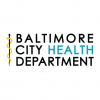Baltimore City Experiences Record Low Infant Mortality Rate in 2015
Wednesday Oct 5th, 2016
FOR IMMEDIATE RELEASE
Since the implementation of B'more for Healthy Babies in 2009, Baltimore City has experienced a 38 percent decline in the infant mortality rate
BALTIMORE, MD (October 5, 2016) – Baltimore City health officials announced Wednesday that in 2015, Baltimore City experienced the lowest infant mortality rate on record: 8.4 per 1,000 live births—a 19 percent decline from 2014. The previous low of 9.7 deaths per 1,000 live births was recorded in 2012.
Since the implementation of B'more for Healthy Babies (BHB) in 2009, infant mortality in Baltimore City has declined by 38 percent, while the rate for African American infants has reduced by nearly 50 percent during same time period.
“I am proud of Baltimore City’s efforts to ensure that babies and their families are able to grow and thrive. These numbers show that the hard work of so many partners across the city is paying off,” said Mayor Stephanie Rawlings-Blake. “I look forward to the day when everyone knows the the ABCs of safe sleep, just like they know the alphabet.”
In 2009, Baltimore City had the fourth highest infant mortality rate in the nation. B'more for Healthy Babies, a public-private partnership led by the Baltimore City Health Department, the Family League of Baltimore, and more than 100 partner agencies from the corporate, nonprofit, academic, donor, and government sectors, was founded to ensure that all babies are born at a healthy weight, full-term, and ready to thrive in healthy families.
BHB works to decrease the three leading causes of infant death: premature birth, low birth weight birth, and unsafe sleep. The initiative utilizes a collective impact approach to improve an often-fragmented health care system to reach all of Baltimore’s families with quality maternal and infant health services and support. In 2010, BHB launched the “Sleep Safe” campaign to encourage parents to put their babies to sleep following the ABCs of safe sleep: “Alone. On their Back. In a Crib. Don’t smoke. No Exceptions.”
“Infant mortality is an indicator of how a community takes care of its youngest and most vulnerable members,” said Baltimore City Health Commissioner Dr. Leana Wen. “This campaign shows what we as a city can do when people come together to move the needle on a key health outcome. We are so proud of the efforts of our partners to save the lives of our babies, address health disparities and work towards health equity in our city.”
Since the program’s inception, Baltimore’s infant mortality rate has dropped, while disparities between black and white infant deaths have also consistently decreased. As a result of B’More for Healthy Babies, the teen birth rates in the city have dropped by an unprecedented 36 percent. BHB is designed to work in four interrelated ways throughout the life cycle:
In Preconception Health: encouraging primary health care, teen pregnancy prevention, and reducing substance abuse;
- During Pregnancy: promoting prenatal care, offering home visits for high risk clients, encouraging social networks through Baby Basics, promoting smoking cessation, and reducing second hand smoke exposure;
- Post Pregnancy: providing social support, post-partum depression screening, safe sleep education, free cribs, and home visits for families in need, promoting breast-feeding and birth spacing, and reducing obesity; and
- Around Newborns: encouraging housing stability and job creation, promoting family literacy, and advocating for trauma informed services and systems underlie our programs at every stage of the life cycle.
Efforts that have contributed to the campaign’s success include:
- Showing videos to every family in the hospital after a baby is born and in other places, like jury duty and health care waiting rooms;
- Training more than 4,000 health and social services providers in Baltimore on the ABCs of Safe Sleep in order to educate patients and other clients;
- Helping hundreds of low-income families access safe cribs; and
- Engaging communities with community health workers who share safe sleep messages in barbershops, public markets, libraries, health fairs, and door to door canvassing.
“The loss of even one child is one too many. We look forward to working with our partners to scale up the success of B’More for Healthy Babies,” added Dr. Wen. “This is a proven and effective intervention. We must all come together ensure that evidence-based solutions like B’more for Healthy Babies has enhanced and sustained funding.”
For more information on the B’more for Healthy Babies campaign, visit: http://www.healthybabiesbaltimore.com.
